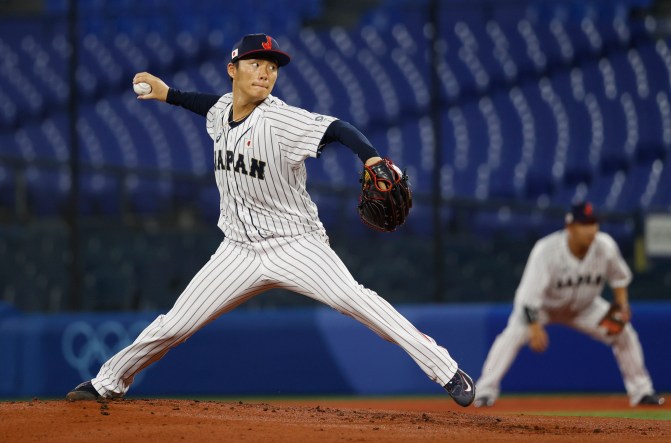
As soon as Texas Rangers’ catcher Jonah Heim caught the third strike from Josh Sborz to end Game 5 of the 2023 World Series, Major League Baseball’s offseason suddenly was on the clock.
These next few months without games should be captivating, given that the most unique player in MLB history will be a free agent, as will several potential aces and a former MVP.
This offseason should focus more on player movement than on off-field determinations such as rules and labor negotiations that rose to the forefront in recent winters. Although there is expected to be one piece of major business conducted in mid-November at the owners’ meetings: Whether the Athletics are approved to move from Oakland to Las Vegas, signifying the league’s first franchise relocation since the Expos left Montreal for Washington before the 2005 season.
Technically, players eligible for free agency – those with six or more years of service time and no binding contract – became unaffiliated at 9 a.m. Thursday. But they are now in an exclusive negotiating window with their most recent teams and can’t begin talking to new clubs until 5 p.m. ET Monday. Shortly thereafter, front office officials will begin to roll into Scottsdale, Ariz., for the three-day General Managers Meetings from Nov. 7-9.
That’s where conversations – both involving trades and free agency – typically begin earnestly, with foundations built for future moves. Also on Monday, teams and players must make final decisions on whether to exercise 2024 contractual options.
Next week is just the beginning in what will be a sustained frenzy. Few, if any, players sign during the first week or two of free agency. Typically, the hot stove starts crackling the week heading into baseball’s winter meetings, which this year are Dec. 3-6 in Nashville.
Sometimes, the podium is hopping with announcements during the winter meetings, other times the market progresses slowly. Generally, players want to know where they will be playing in time for the Christmas and New Year’s Day holidays, but some negotiations drag into February.
Shohei Ohtani the focus of MLB free agency

The most expensive item this year undoubtedly will be two-way superstar Shohei Ohtani, who could be in line for a $400 million contract assuming baseball’s fattest cats can live without the 29-year-old pitching in 2024. After undergoing elbow surgery in September, Ohtani should be able to bat in 2024 and then will take the mound again in 2025.
Exactly how much money Ohtani gets – and from whom – will be the No. 1 storyline of this offseason. Depending on how long it takes his agency, CAA, to land a deal could also affect the overall market, because some teams may want to make sure they are out of the Ohtani bidding war before they set their sights elsewhere. So, if Ohtani doesn’t sign until early 2024, other players could be waiting in limbo.
The free-agent pool isn’t considered particularly deep this year, but there are several intriguing names available, including likely 2023 NL Cy Young Award winner Blake Snell, three-time Cy Young winner Clayton Kershaw, five-time All Star closer Josh Hader and former National League Rookie of the Year and MVP Cody Bellinger, who had a bounceback season in 2023 after three consecutive down seasons.
Both Bellinger and Snell, as well as lefty Jordan Montgomery and hitters Matt Chapman and J.D. Martinez, among others, are represented by the Boras Corporation, which is known for landing top dollars for its clients, often in a patient, deliberate fashion. So, this could be a long and expensive winter for baseball owners.
Yoshinobu Yamamoto is an offseason wild card

The biggest wild card this offseason is another Japanese star, 25-year-old right-hander Yoshinobu Yamamoto, who has won the Sawamura Award, Japan’s equivalent of the Cy Young, in three consecutive seasons. With four above-average pitches, including a mid-90s fastball and a devastating splitter, Yamamoto projects as a potential No. 1 starter in the United States. He is expected to be posted by his current team, the Orix Buffaloes, and then would have 45 days to negotiate with major-league clubs before choosing.
Given his dominance in Japan – a 1.82 ERA in seven seasons in Nippon Professional Baseball – Yamamoto could near the $200 million mark, breaking the record contract of seven years, $155 million for a Japanese pitcher set in 2014 by New York Yankees’ right-hander Masahiro Tanaka.
The current free-agent pool will expand again Nov. 17 when teams must decide whether to tender contracts to arbitration-eligible players. If teams don’t, those players immediately become free agents. Although there are rarely impact names that fall into this category, there are often serviceable players who are non-tendered.
One other aspect that could make this offseason unique: Of the top 15 total payrolls in 2023, according to spotrac.com’s MLB tracker, only five made the playoffs and the top three – the New York Mets, New York Yankees and San Diego Padres – didn’t. The club with the fourth highest payroll, the Texas Rangers, won the World Series.
So, there should be plenty of teams used to spending money that have to be disappointed with their 2023 performances and their current rosters. And that means more money could be tossed around this winter – or more blockbuster trades could happen.
Which would make this offseason even more intriguing to follow.
Dan Connolly is an MLB Insider for Sportsnaut. Follow him on Twitter.
